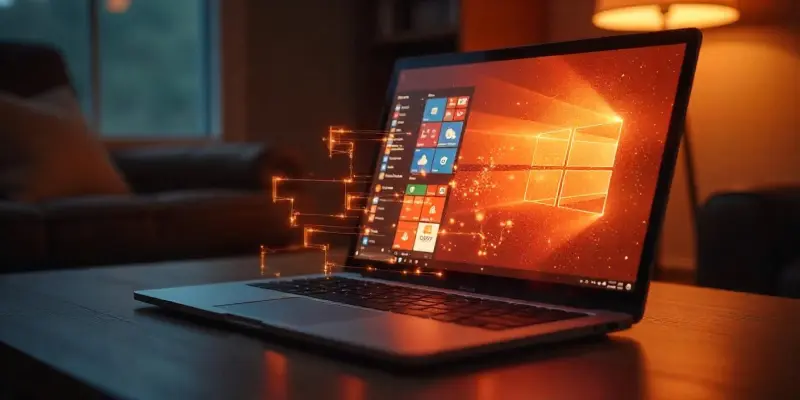Microsoft has revolutionized the Windows 11 Start menu, introducing a sleeker design that prioritizes speed, personalization, and usability. As Windows 11 users anticipate these enhancements, the driving force behind the design changes remains rooted in user feedback, allowing a smooth blend of familiarity and cutting-edge features. With these updates, the tech giant hopes to ensure a seamless experience for both seasoned Windows aficionados and newcomers exploring the software for the first time.
The Design Roadmap
Evolution Through User Insights
One of the most pivotal aspects of the Start menu redesign was Microsoft’s commitment to user-centric development. Engaging over 300 active Windows 11 users in their research, the company conducted a series of tests and focus groups, carefully analyzing feedback and leveraging it to inform their design decisions. By providing early access to proposed concepts, users had the opportunity to express their preferences and highlight any shortcomings, ultimately shaping the final outcome. This collaborative process not only helped Microsoft refine the user interface but also aligned it closer to the actual needs and desires of its diverse user base.
Concepts that fell short of expectations were reevaluated, each considered for practicality and efficacy in terms of design and functionality. Notable attempts included transforming the Start menu into a digital ecosystem complete with personalized app lists, sections for easier Android phone interactions, and creative tools. Keeping personalization and efficiency as core pillars meant revisiting ideas like using almost all vertical space on the screen, enabling users to scroll through content-rich sections within the menu seamlessly. Such attempts underscored Microsoft’s endeavor to strike the perfect balance between tradition and modernization, ensuring user navigation remains intuitive and gratifying.
Blending Familiarity with Modernity
Achieving equilibrium between innovation and familiarity was at the heart of Microsoft’s reimagined Start menu. The updated design achieves this by positioning all applications at the top level, eliminating the separate “All Apps” view, a subtle yet noteworthy departure from past iterations. Users can now tailor their experience by arranging apps into preferred categories like a grid system or an A-Z list, offering flexibility to match personal preferences. A wider menu layout allows for more pinned apps to be displayed simultaneously, thereby maximizing information accessibility without overwhelming the user.
Incorporating feedback to improve usability, the new design refines app organization while enhancing navigational ease. Further, expanded customization options empower users to hide or adjust sections as desired. A particularly noteworthy addition is the “phone sliver” panel, which seamlessly integrates content from mobile devices, making it simpler to access photos, messages, or tasks without disrupting workflow. These changes not only reflect Microsoft’s dedication to evolving based on user feedback but also promise to enrich the interaction landscape across different device interfaces—from compact tablets to expansive monitors.
Prioritizing Seamless Integration
Enhanced Device Connectivity
A standout feature of the revamped Start menu is its enhanced compatibility with both Android and iOS devices. The introduction of the “phone sliver” panel allows a direct conduit for tasks, photos, and messages, all accessible without breaking one’s workflow. By facilitating this seamless integration, Microsoft has addressed a crucial demand: the need for a cohesive experience spanning multiple devices. This feature caters particularly to professionals and multitaskers who rely on switching between desktop and mobile environments effortlessly, enhancing productivity without unnecessary interruptions.
This thoughtful integration supports various screen sizes, ensuring an optimized experience whether on smaller tablets or large-scale monitors. It aligns with the modern trends of work-from-anywhere arrangements, as more users adapt to hybrid workspaces that require flexibility and fluidity in transitioning between devices. The adaptability of the new design and speedier load times signify substantial strides toward Microsoft’s goal of fluid cross-platform interaction, confirming that the tech giant is keeping pace with evolving digital lifestyles and work habits.
Customization and Personalization
Customization stands as a cornerstone of the updated Windows 11 Start menu, featuring an array of options designed to cater to individual tastes and preferences. Users can now configure the menu to highlight sections most relevant to them, ensuring a tailored experience that aligns with their unique workflows. While the basic navigational structure remains parseably familiar, the newfound capacity to rearrange, hide, or spotlight specific sections empowers users to curate their digital workspace meaningfully.
This heightened customization taps into broader industry trends that celebrate user agency and individual expression within software systems. Beyond aesthetic adjustments, these options promote efficiency by aligning layout and functionality with specific user objectives. The wider redesign complements this ethos, favoring intuitive navigation and quicker access to essential tools and applications. Such forward-thinking advancements illustrate a conscientious approach towards building a user interface that is as adaptable as it is innovative, ensuring the Windows platform remains relevant and efficiently serves its users.
The Road Ahead
Microsoft has transformed the Windows 11 Start menu, unveiling a sleek design that emphasizes speed, personalization, and ease of use. This change is anticipated eagerly by Windows 11 users, as the revisions stem from continuous user feedback, promoting a balance of traditional and advanced features. Operating system updates often ignite both debate and excitement, yet Microsoft’s current strategy involves a gradual refinement process informed by thorough testing and user suggestions. This approach allows the company to better address user needs and expectations, ensuring the updates not only enhance functionality but also maintain the familiarity users expect from Windows.
These enhancements are crafted to deliver a seamless experience for both longtime fans of Windows and those encountering the software for the first time. Ultimately, Microsoft’s intention is to create an intuitive system that caters to diverse user demands while staying on the cutting edge of technology, offering reliable performance in a dynamic digital landscape.

